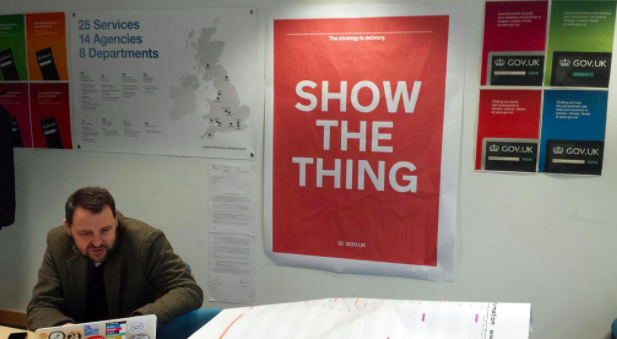|
In the years since I left Government Digital Services (GDS) I’ve worked with many large organisations and C Suite Leaders helping them understand the challenge of digital transformation at scale. Threats to their business models, the challenge of communications, culture change, new leadership behaviours the list goes on and on. If I had a penny for every time I muttered “I wish there was a GDS book” I’d be a rich woman. Thankfully there now is one and its called Digital Transformation at Scale: Why the Strategy is Delivery. Authored by Andrew Greenway, Ben Terrett, Mike Bracken and Tom Loosemore it’s a distillation of all the learning experienced by the GDS team(the authors use “we” throughout as a means of acknowledging the contribution of so many who worked with and for GDS) as it sought to radically change the provision of public services in the UK. It’s not the story of GDS (that would probably need another book entirely) but rather as the authors suggest a set of guides “for how to build a digital institution” It explains how reformers in businesses and governments have helped organisations pivot to new ways of working and offers lessons others can learn from their experience. Books that talk about tech or tech change tend to be (IMHO) a tad well “technical” but this offering from the Public Digital team is droll and funny in parts like the observation that for good working spaces in digital you don’t need pool tables or martinis or mini fridges. Things on walls, decent computers and stickers will get you most of the way. Or in other words “The digital revolution can be found in Rymans”. And there are lots more of these useful observations like the fact that “good digital work is a million silent nods of approval, not one loud round of applause” One of the things that has struck me most when working with large organisations is that those in the decision making seats often know the least about technology or the internet. Then you have people lower down the chain who get that things need to change radically and who try to fix bits here and there to make things better. What you really need and what this book offers is the ability to understand all of the various elements that need to be in place for digital transformation. If you are equipped with the totality of that knowledge in advance then you’ve got a much better chance of success. (Particularly if you are one of the people lower down the chain and you need to be managing up to achieve your goals). So what does the book cover? Well this. . Why change . Before you begin . Where to start . The first team . Preparing the ground . Building credibility . Winning the arguments . Reverting to type . Running the numbers . Consistent not uniform . Setting the standards . Finding leaders . What comes next Each chapter has a useful summary at the end that provides a clever cheat sheet if you are a senior leader and you need to get up to speed quickly. This book draws heavily as you would expect from the experience in government but it draws on many examples from the private sector too. And in my own experience working with corporates it’s clear to me that the challenges for government and the private sector are largely the same. As summed up in the epilogue: “The difference for governments and organisations that invest in actively responding to an uncertain future is that the worst outcome is that they learn something. For those who stick incuriously to what they know, the worst outcome is that they aren’t needed anymore”.
So if you are are a senior leader who wants to know how to do digital transformation at scale you need to read this book. If you are an emergent leader struggling with how to win the argument for change you need to read this book. Basically if you want to do digital transformation at scale and do it well. You need to read this book.
0 Comments
|
Details
Categories
All
Archives
August 2023
|



 RSS Feed
RSS Feed